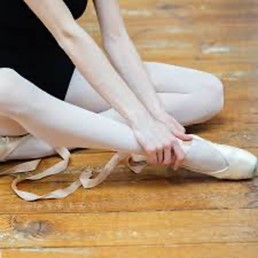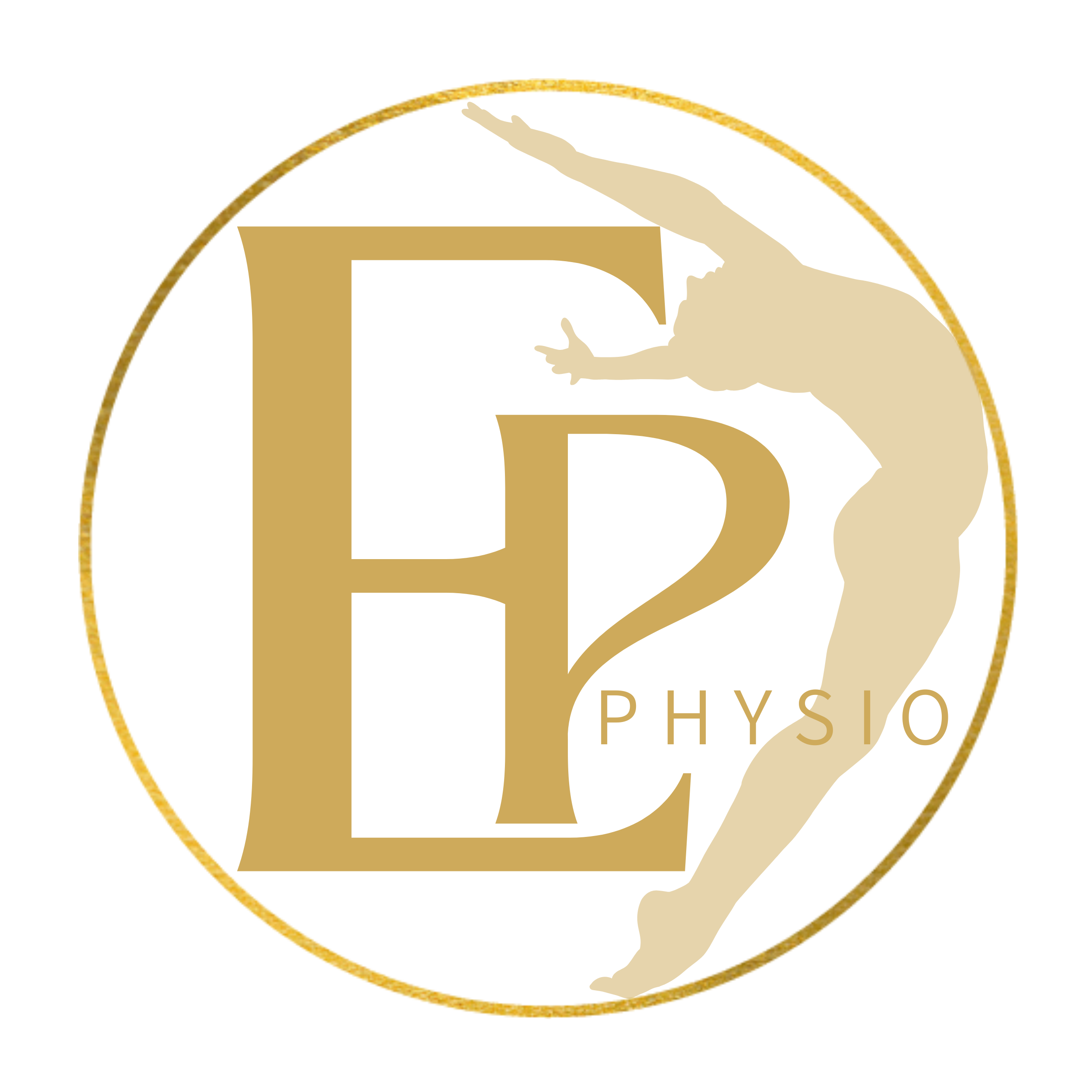
Achilles Tendon Pain: Symptoms, Diagnosis & Treatment
Achilles Tendon Pain
This is a common area for soreness and pain in dancers; it can be notoriously difficult to settle down and I will regularly have dancers describe how they have had pain here for years. Through this discussion, we will look at common diagnosis, causes, signs or symptoms and what to do about it.
Tendinopathy
This is the most common diagnosis given to pain in the Achilles (or any other tendon). In the Achilles, the pain will be sub divided into mid portion Achilles tendinopathy or insertional tendinopathy. Tendinopathy is now used as the term rather than tendinitis, as it is no longer believed that the condition involves inflammation which is what ‘itis’ refers to.
When we load a tendon with forces such as jumping, we start to affect how the body builds new tissue and breaks down tissue. If the load through the tendon is receptively too great, then we run the risk of affecting the balance of breakdown and repair. This can lead to the Achilles becoming less able to deal with the loads that are being applied, and can result in pain.
Reactive Tendinopathy
This generally occurs after a significant alteration in load. One of the most common causes is returning to jumps in a class situation after a break (think school holidays), without the gradual increase in load. Often, it will visibly swell through the Achilles and be very painful.
Dysrepair
This stage follows the reaction phase and occurs if the tendon continues to be excessively loaded. It will continue to be painful but may not present with swelling as seen in the reactive phase.
Degenerative
This will generally be associated with an older athlete and represents repetitive overloading of the tendon over a long period of time. With this, the tendon structure itself can start to change making it less efficient at adapting to and taking load. The tendon can start to appear thicker, and there can be an increased risk of partial or full rupture.
Symptoms
The symptoms of a tendinopathy tend to be gradual in onset, with low levels of pain or discomfort initially noted after a class or at the end of a day, with some stiffness or pain also present first thing in the morning. As the symptoms progress, the pain generally becomes more intense and longer in duration. Touching or squeezing the Achilles tendon between 2cm to 6cm from the heel bone, will cause pain, and can sometimes feel thicker or swollen.
Differential Diagnosis
Other issues that can occur around the area of the tendon are:
- Insertional Achilles tendinopathy. This is when pain is experienced at the base of the Achilles tendon as it inserts into the heel bone.
- The retrocalcaneal bursa can also be come inflamed, causing a bursitis, with pain at the base of the Achilles.
- The final condition that can often be confused for Achilles Tendinopathy is plantaris tendon pain, this is a small tendon that is embedded in the Achilles and can cause pain or irritation.
Management
Reactive or dysrepair tendon management is similar in that we need to try to calm the symptoms down, as they are likely to have occurred after an increase or change in training levels or style. The most important part of management here, is load management. This means that if we can reduce the stress being placed upon the tendon, it may settle relatively quickly. This may mean that in some cases, you can continue with classes, but may limit your jumps or travelling movements, as long as they are still pain free.
It is important to monitor not only symptoms while undertaking class or performance, but also over the following 24 hours, as often a tendon can take 24 hours to respond to load. If performing continues to aggravate, then it may be sensible to take a short period rest, while implementing other strategies:
- Anti-inflammatories have been shown to help in the early stages of reactive tendinopathy to help reduce the reactive response, even if inflammation is not present.
- Ice, for at most 15 mins no more than every 3 hours, can help with pain management. Always ensure the ice is wrapped and not directly placed on the skin.
- Offload the tendon, with a heel rise in your shoe to shorten the Achilles and place less tension through the region. Kinesio tape can also be used.
- Soft tissue techniques to the calf can also be beneficial if some tension is present, or mobilisations to the ankle or joints of the feet, as this can sometimes contribute to pain developing.
- Isometric exercises have been shown through some research, to help the management of pain. The idea is to slowly push your weight up onto your toes, hold this position for up to 10 seconds. Then slowly lower, repeat this up to 5 times.
As you become more able to tolerate, more weight should be placed on the weaker or painful leg. If it is too painful to push up or control down, then more weight can be placed on the stronger leg to manage these movements.
As you begin to return to dance, it is important to be guided by your healthcare practitioner, as sometimes, even if pain appears to have settled, it can return if load is increased too quickly. They will also be able to explore any causes of the tendinopathy to help put a plan in place to prevent recurrence of the issue.
Dysrepair and Degenerative phase
As before, it is really important to find the right load management strategy, aiming to find the level of load that does not cause an immediate or 24-hour reaction of pain in the Achilles.
The most important part of rehab here, is to increase the Achilles tolerance to load. This can be carried out with specific eccentric exercises or localised strength and conditioning exercises, alongside tackling the cause of the pain in the first place.
Eccentric exercises are the act of lengthening a muscle while it is contracting. This has been shown to potentially help reorganise the structure of the muscle tissue to increase its capacity to deal with loading.
These are undertaken for the Achilles in the form of a heel drop and is known as the Alfredson painful heel drop protocol, as it can sometimes be uncomfortable to perform. The exercise is carried out on a step. With the balls of your feet on the step, come onto tiptoes, then slowly lower the heels until you feel a stretch in the Achilles/calf. As you feel able, try to place more weight on the weak or painful side until the exercise can be performed on 1 leg.
This protocol is made up of 2 exercises, the first is the movement described with the knee staying straight, the second is the same movement but with the knees bent, the location of where you feel the effort in the leg is likely to change with the bent leg, feeling it closer to the Achilles tendon, and the straight leg more into the calf. Eccentric exercises can be sore when performing, so do not be put off if that occurs. Try to progress the load, sets or repetitions as pain allows.
Example of single leg eccentric rises with straight and bent leg
Strengthening exercises
Help to generally strengthen the calf muscles can be found through discussion with a knowledgeable health professional. They will be able to guide you on concentric exercises, isometrics and plyometrics to help improve your strength and control.
Example of concentric single leg rise
Example of concentric soleus strengthening
Example of plyometric exercises: skipping, drop into jump and drop into hop
Summary
Management of Achilles pain can be really tricky. The key for any performer who experiences this, is to initially identify what stage of the injury you are in, and how you manage your load to minimise symptoms. An assessment to identify the cause of the symptoms should also be carried out by an experienced and competent physiotherapist, with experience of biomechanics and progressive exercise management strategies.

